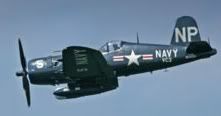jeffs
Posts: 644
Joined: 2/19/2004
From: Tokyo
Status: offline

|
Reading Guadalcanal [Richard Frank]
Several things are clear.
1. Yamamoto, possibly thinking that Guadalcanal was not the decisive battle (and Americans really do not
fully grasp how seriously the Japanese believed in the idea of the "decisive" battle. The one slugfest that decides the war) was relucantant to make a full commitment. There were times when the IJN could have been more aggressive in bombarding, isolating Guadalcanal.
2. The army did not really respect the marines. Weird, but true. The army just thought it could easily blow past the marines.
3. Nobody was fully in charge. Unlike the US, which did (at least in theory, though Ghormley turned out useless)
at least in theory have people responsible, the IJN and the IJA looked at it separately.
4. Likewise with 3, the key to Guadalcanal was henderson field. The Japan did not need to occupy, all they needed to do was deny the US the ability to use it. Japan was slow in realizing this.
_____________________________
To quote from Evans/Peattie`s {Kaigun}
"Mistakes in operations and tactics can be corrected, but
political and strategic mistakes live forever". The authors were refering to Japan but the same could be said of the US misadventure in Iraq
|
 Printable Version
Printable Version








 New Messages
New Messages No New Messages
No New Messages Hot Topic w/ New Messages
Hot Topic w/ New Messages Hot Topic w/o New Messages
Hot Topic w/o New Messages Locked w/ New Messages
Locked w/ New Messages Locked w/o New Messages
Locked w/o New Messages Post New Thread
Post New Thread